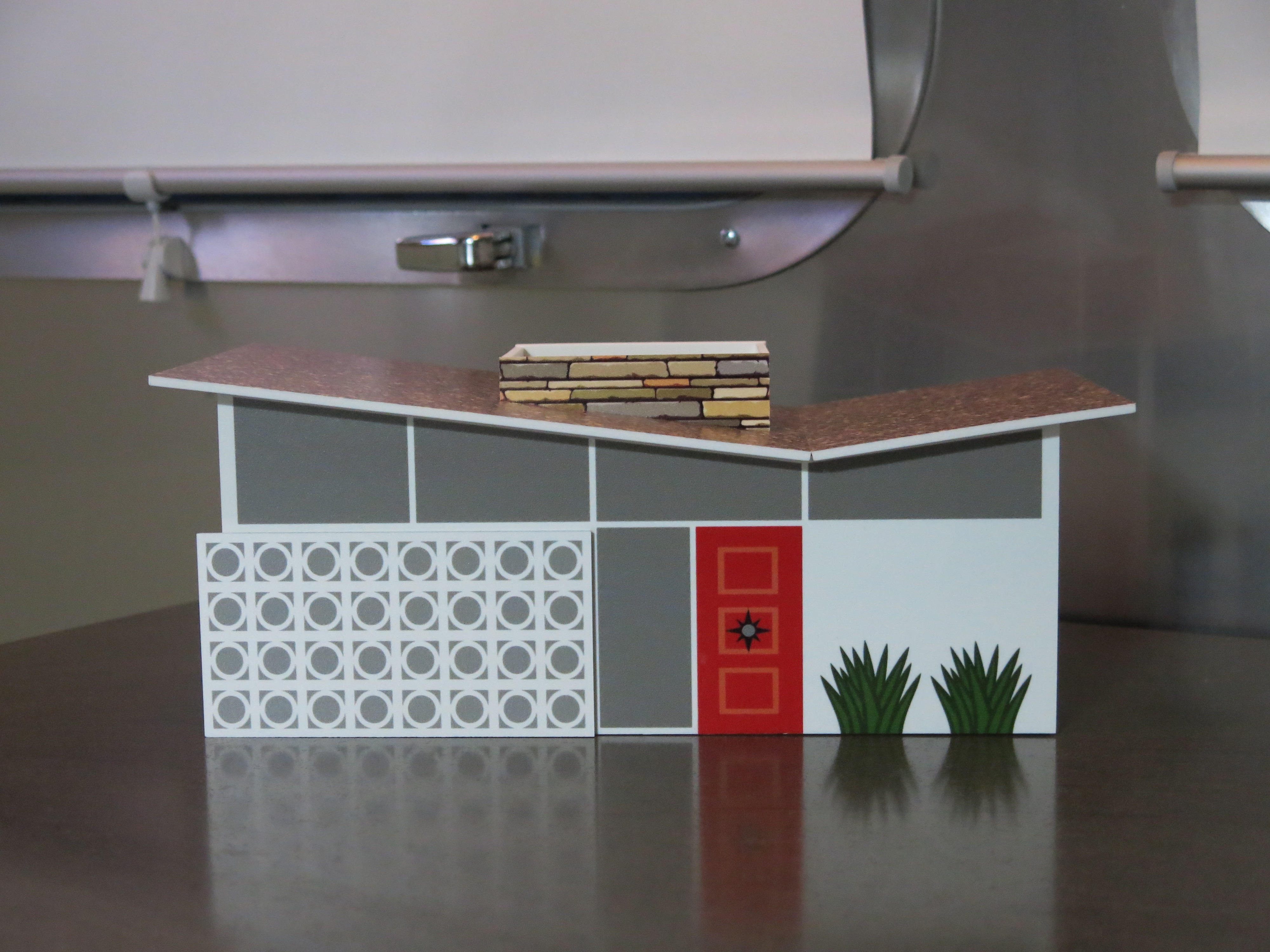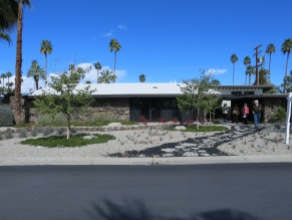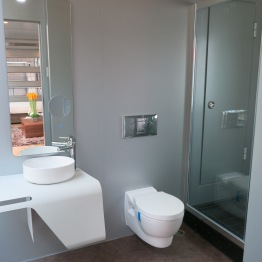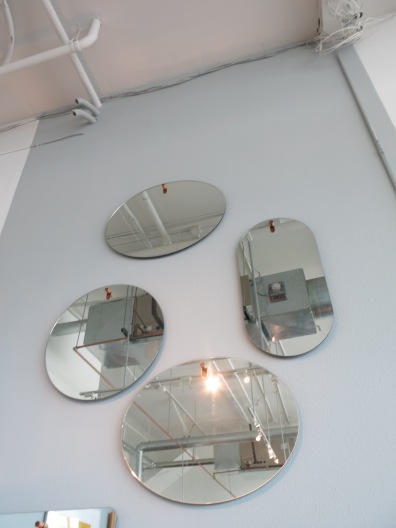February 11-17, 2019 (Week 1)
I tried and tried to get an RV site within Palm Springs, but this is prime time, and no one was cancelling. Since we have friends who own a site in a park in Desert Hot Springs, we were able to stay there. Sheila came along with us for a few days to see some of the sights. On Tuesday and Wednesday, we walked the strip (Palm Canyon Drive). We couldn’t help ourselves and had lunch both days at Sherman’s Deli. Oh man! Giant matzo ball soup! This restaurant is a landmark, and there is always a line-up, but it’s worth it.

My new Palm Springs house! OK, it’s a tissue box.

On Wednesday night, it started to rain.
On Thursday, we were awakened by the phone screaming and the words “Flash Flood Warning for your area.” OK. Stay out of the washes. No problem. We decided to tour some of the other cities in the Coachella Valley. It rained all day, but it didn’t seem too outrageous. While we were in one shop, two clerks were talking about how Palm Springs was shutting down. The roads were impassable, and it was too dangerous. People were being sent home. What? Come on. It wasn’t that bad. Well, as we made our way back to Desert Hot Springs, there were some flooded sections of road where the roads crossed washes. We drove through slowly. Then, we came across some closed roads, so we took detours. That was a good thing because cars had been swept away for not heeding the warnings!
On Friday, the rain had stopped. Sheila returned to Yuma while we returned to Palm Springs for the Modernism Week festivities. Oh my! Exciting, but not festive. We met road closure after road closure. It was madness! The washes were full and overflowing their banks, taking sections of roads with them.

Cathedral Canyon Dr.

Cathedral Canyon Dr.
Unbelievable! This storm was in the top 3 storms in recorded history (approximately 100 years). We also learned that the RV park that I kept pestering to get into had to be evacuated during the storm. We were very thankful that we had brought Poppy with us that day because it took us 2 hours to get back to Desert Hot Springs. Since then, we’ve taken her everyday, much to her dismay. The weather has been too unpredictable to leave her alone. Nevertheless, she gets lots of attention from strangers and shop clerks. Palm Springs is very pet friendly.
Here is the road leading to the tramway. There is helicopter there because it had just surveyed the road damage leading up there.

Of course, Palm Springs was only a “wash” in the desert sense. It rocks!
We found a perfect midcentury modern (MCM) cone lamp for the Airstream. Updates on that will come when we return to Canada. It will require some drilling and other fun, so Paul wants to have access to his tools. This is the interior of the shop where we found the lamp. I’m obsessed by the capsule shaped mirror on the far right (Hang 1 Capsule mirror by Blu Dot, but alas, it is too rich for my budget). It would be perfect in the Airstream bathroom. It resembles the shape of the window in there. In front of the green dog is a water bowl. Every shop has a water bowl for dogs, of course.
Now, let’s look at some far out architecture.
Tramway Gas Station (Albert Frey & Robson Chambers, 1965). It is now the visitors’ centre. Once you filled up there, you must have felt like you were ready to enter orbit. What a dramatic roofline!
Sante Fe Federal Savings & Loan (E. Stewart Williams, 1961). It is now the Art Museum. I adore the metal screens.
Coachella Valley Savings & Loan (E. Stewart Williams, 1961). It is now a Chase bank. Can columns be more graceful?
The Rowan (November 2017). OK, I’m obsessed with this building. It’s new, but it could be 60 years old! Look at the metal work and the yellow accents. I admire it every time I walk by.
BevMo! I don’t believe this building has any historical significance other than the fact that you’ve seen a building like this as some point. It is simple and lovely, but buildings like this were torn down long ago across North America. However, in Palm Springs, it has value. I love the way the roof mirrors the concrete blocks.





































































































































































































































































